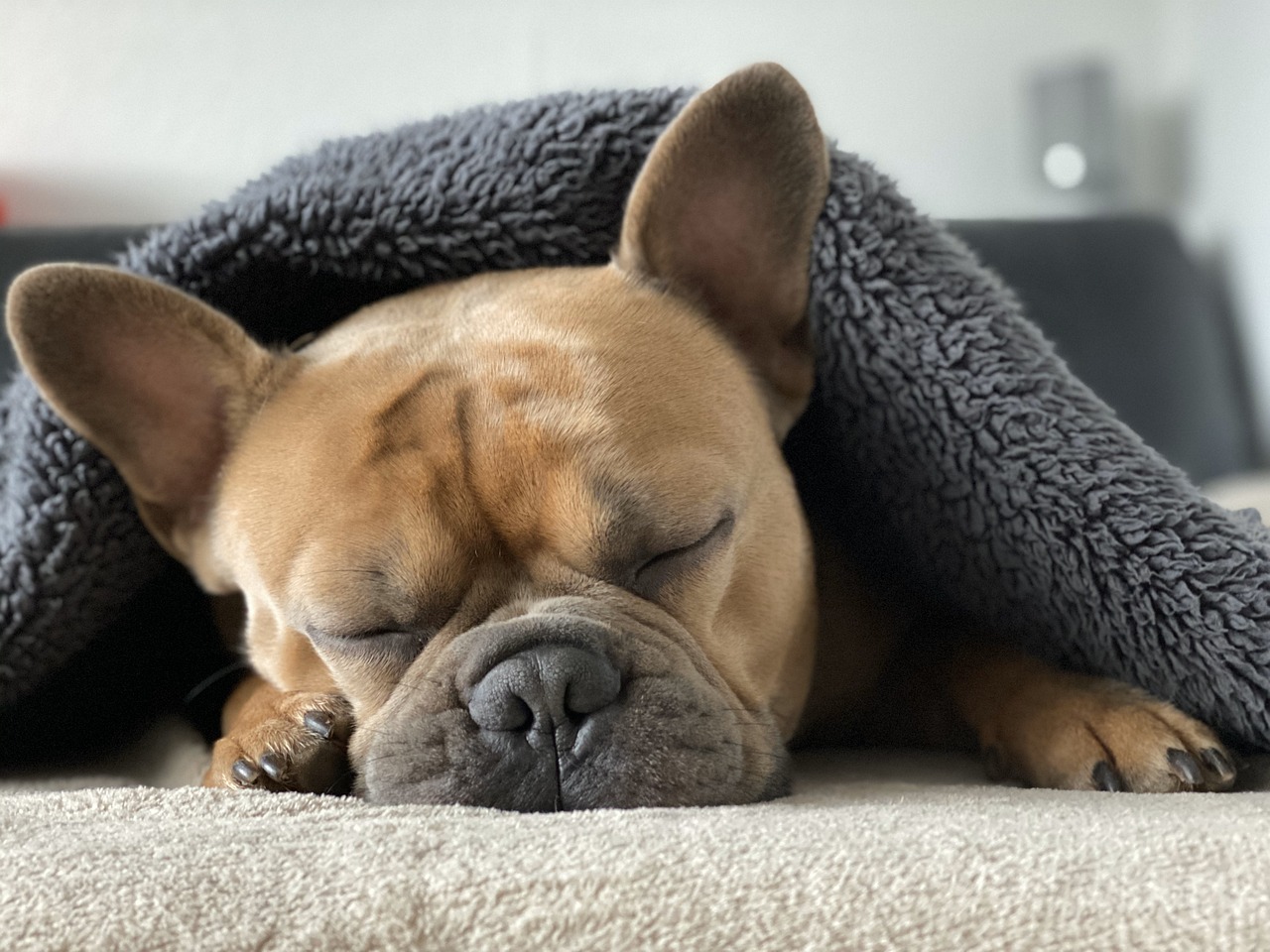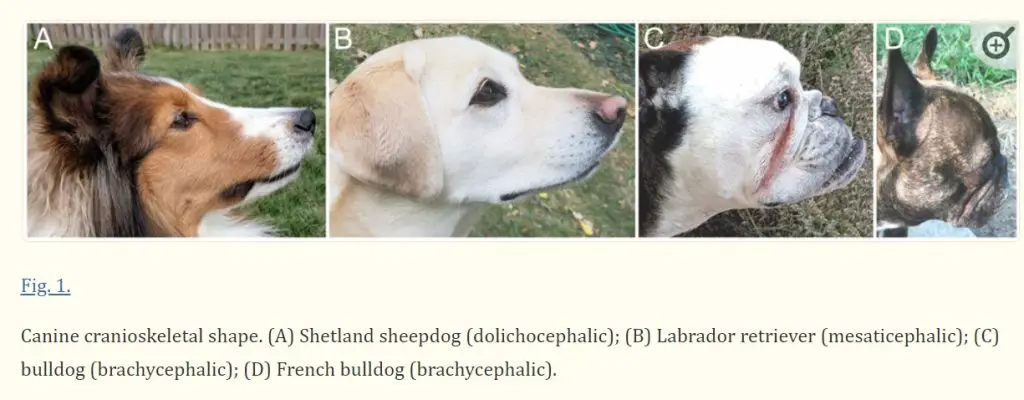Dealing With Brachycephalic Syndrome In Dogs

Brachycephalic syndrome eventually develops in many brachycephalic dogs. But what are the symptoms, how is it diagnosed and are there any treatment methods?
Brachycephalic (pronounced – bra.kuh.suh.fa.luhk) dogs have short muzzles and flattened faces caused by genetic mutations such as a shortening of the nasal bones that result in a shorter, wider skull shape. This is an ancient breeding defect that has carried on through many breeds such as Mastiffs over the centuries.
Breeds such as the French Mastiff or the popular Pug dog are examples of brachycephalic dog breeds. They remain popular with many owners across the globe, despite their health concerns.
There have been many attempts over the years from animal welfare groups calling for the removal of brachycephalic breeds from the likes of Crufts, but all have so far failed as these breeds remain very popular and advocates are constantly researching new treatments and preventative measures.
Sadly, many dogs with the brachycephalic face do develop health concerns, often referred to as “Brachycephalic Syndrome”.
What is Brachycephalic Syndrome In Dogs?
Brachycephalic syndrome in dogs is also referred to as BOAS (brachycephalic obstructive airway syndrome), or congenital obstructive upper airways disease. It refers to a specific set of upper airway abnormalities that affect the health quality of brachycephalic dogs.
The abnormalities that present themselves as symptoms of this disease are:
1
Stenotic Nares
Dogs with stenotic nares have extremely narrowed nostrils. This narrowing of the nostrils restricts the amount of air that can flow through the nostrils. Stenotic nares are common features for smaller dogs breeds that may suffer from Brachycephalic Syndrome.
2
Hypoplastic Trachea
A hypoplastic trachea simply means that the dog’s trachea has a smaller diameter than is considered normal.
3
Elongated Soft Palate
This is where the dog may have a soft palate that is too long for the mouth. This excess length may impinge on entrance to the trachea at the back of the throat.
4
Extended Nasopharyngeal Turbinates’
Nasopharyngeal Turbinate’s help humidity air that is inhaled by the dog. In dogs that suffer from Brachycephalic syndrome, the turbinate’s may extend past the pharynx and cause a disruption in airflow.
5
Laryngeal Collapse
Laryngeal collapse (common in pugs) is caused by stress placed on the larynx. The larynx then struggles to open fully which causes more restriction to airflow.

Secondary health issues from Brachycephalic Syndrome
The above abnormalities can cause an increased risk in other secondary issues to your dogs health such as:
- Bronchial collapse – This is where bronchi which are the airways which connect the trachea to the lungs weaken and collapse.
- Gastroesophageal reflux – This is where intestinal fluid builds up and flows back through the esophagus. Some symptoms of this issue may include vomiting, excessive salivation or drooling and acid reflux.
- Enlarged Tonsils or Inside out Tonsils – This may happen as the throat starts to collapse under the strain
What are the symptoms of Brachycephalic Syndrome in Dogs?
The following list of symptoms are to be treated with caution. To caveat, if you have a brachycephalic dog it may already experience light characteristics of these symptoms as a bi-product of the brachycephalic anatomy (shortening of the nasal bones). However, owners should keep a watchful eye on symptoms that seem to get worse over time.
These symptoms might include:
1
Noisy breathing
This can be in the form of mouth breathing or snoring. Some breeders may tell you this is normal, and although many dogs may snore as they age, it’s something to watch out for.
2
Not exercising
Does your dog show a lack of interest in exercise, or a lack of ability when exercising? This may be because brachycephalic syndrome is starting to establish itself.
3
Overheating
This can occur because the nasal passage is narrowing which may negatively impact how a dog regulates its temperature or tries to keep cool. This may impact larger dogs further, as their larger bodies can also lead to the need for more oxygen.
4
Collapsing or fainting
This will occur if the dog is struggling to take in adequate amounts of oxygen. This can typically occur during exercise or hot weather.
All BOAS issues are due to an inability to take in enough oxygen, this can in turn put added pressure on the heart. Over time this can lead to some very negative health impacts on the dog. The issue is often exacerbated in hot weather or exercise, where it may be common to hear your dog grunting as it struggles to breath efficiently.
With that said, here are some things you can do to help a dog with brachycephalic syndrome:
- Keep your dog cool – Larger Mastiff breeds such as the French Mastiff or Boxer and are typical culprits here. On hot days, ensure there is adequate cool air flow, areas of shade, and clean fresh water.
- Healthy weight – Keeping your dog at a healthy weight can reduce any unnecessary pressure on its system.
- Use a harness – A harness is much better for walking your dog than a traditional collar. A collar can choke and restrict air and worsen symptoms.
Diagnosing brachycephalic syndrome in dogs
As mentioned above, if you see a worsening of the symptoms listed above then you should contact your vet for an examination.
Many vets will assume that your brachycephalic dog will of course develop BOAS throughout its life, however they may be able to identify the exact abnormality in the anatomy that is exacerbating the disease.
When undergoing tests, your vet may conduct a series of examinations such as x-rays, CT scans or endoscopy. Alternatively, they may put your dog under general anaesthesia and examine your dog’s throat.

Treatment for brachycephalic syndrome
Short term treatments and medications can be provided such as corticosteroids, nonsteroidal anti-inflammatory drugs (NSAIDS) and oxygen therapy. These can help offer relief for breathing conditions, however they do not fundamentally address the underlying issues.
In some cases, your vet may be able to recommend surgery on your dog to either widen the nostrils or shorten the soft palate, depending on what the issue is. However, unfortunately, your vet may not be able to use surgery on all BOAS abnormalities.
Lastly, responsible ownership of the brachycephalic breeds requires the preventative measures listed above. Do not let your dog get overweight or over heat. Ensure they get adequate exercise (with a harness when walking), but not at the expense of over exerting themselves and causing breathing issues.
What breeds are brachycephalic?
It’s important to note that there is a brachycephalic spectrum. Some breeds such as the Pug have extremely flat faces. Whereas other breeds such as the Boxer dog have less exaggerated flatness.
Some of the more common dog breeds with brachycephalic faces are:
- The Boxer Dog
- Pugs
- French Bulldogs
- Boston Terriers
- French Mastiff (Dogue de Bordeaux)
- Shih Tzus
- Cavalier King Charles Spaniel
- Japanese Chin
- Affenpinscher
Why are brachycephalic breeds so popular?
From 2006 – 2016, French Bulldogs grew in popularity by 476%. Granted, this may well be one of the more popular brachycephalic breeds, however, the public’s interest in these breeds continues to rocket. But given the known health concerns, why are these breeds still so popular?
I believe the reason brachycephalic breeds are so popular is due to their perceived personality traits. Many owners believe dogs like French Bulldogs and especially pugs as loyal, affectionate, comical, playful and silly. They are suited to children, and often considered more lazy and therefore make for easier pets to have around the house.
The reality of the later point around laziness is often a misconception. Although some of these breeds may tire easier, they’re certainly not lazy. Laziness may develop in later life as a symptom of brachycephalic syndrome, which as we’ve established is something to take seriously.
Frequently Asked Questions:
Which Bones Are Shortened in Brachycephalic Dogs?
In brachycephalic dogs, it is the nasal bones which are typically shortened. However, there are other conditions such as narrowing nostrils which also contribute to the brachycephalic look.
How do I know if my dog has Brachycephalic Syndrome?
Your dog will likely display issues such as mouth breathing, snoring, reluctance to exercise, overheating, collapsing or fainting if it suffers from Brachycephalic Syndrome.
How long do Brachycephalic dogs live?
The life expectancy of brachycephalic breeds will vary from breed to breed. However, they do typically have shorter lifespans of around 8-9 years.